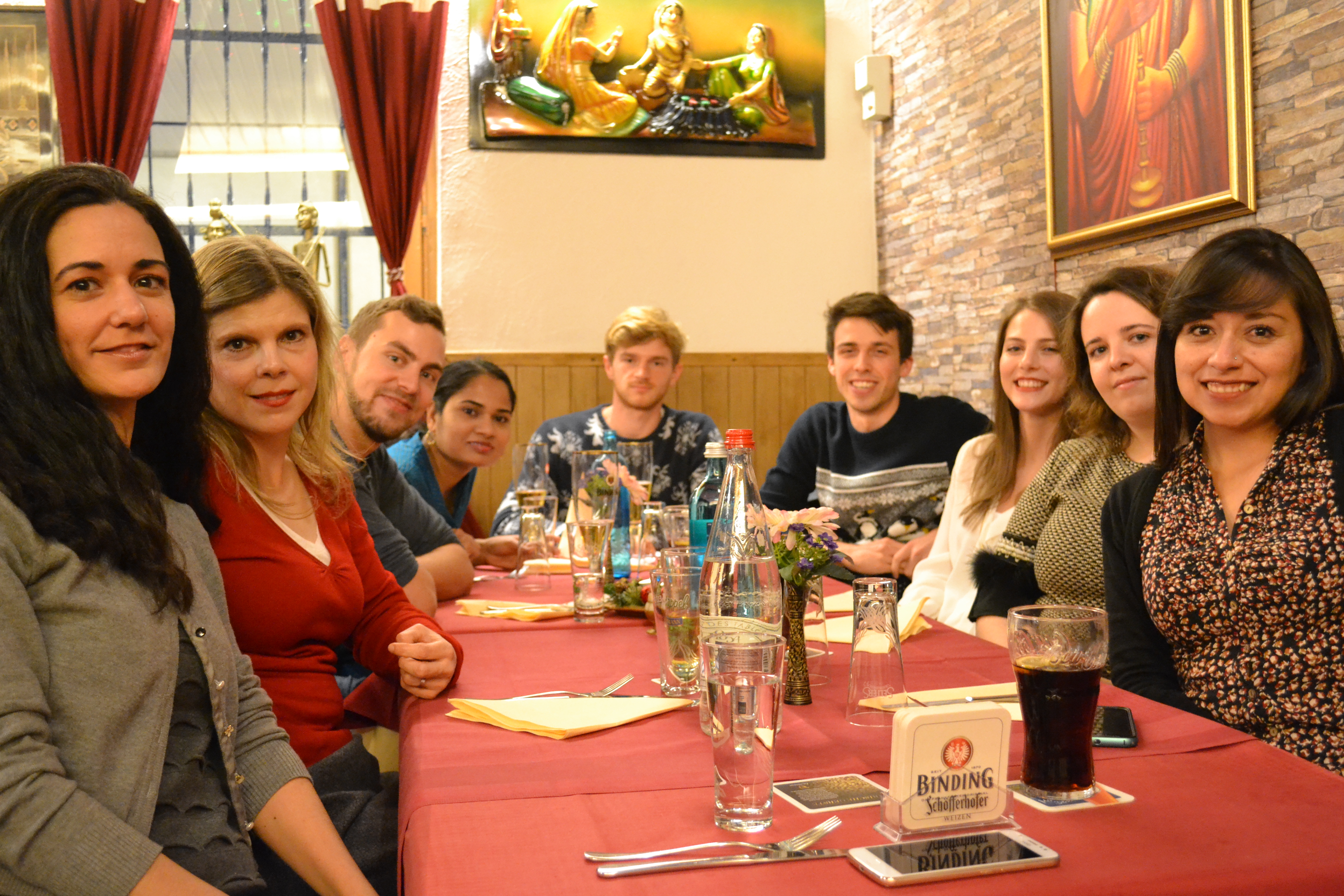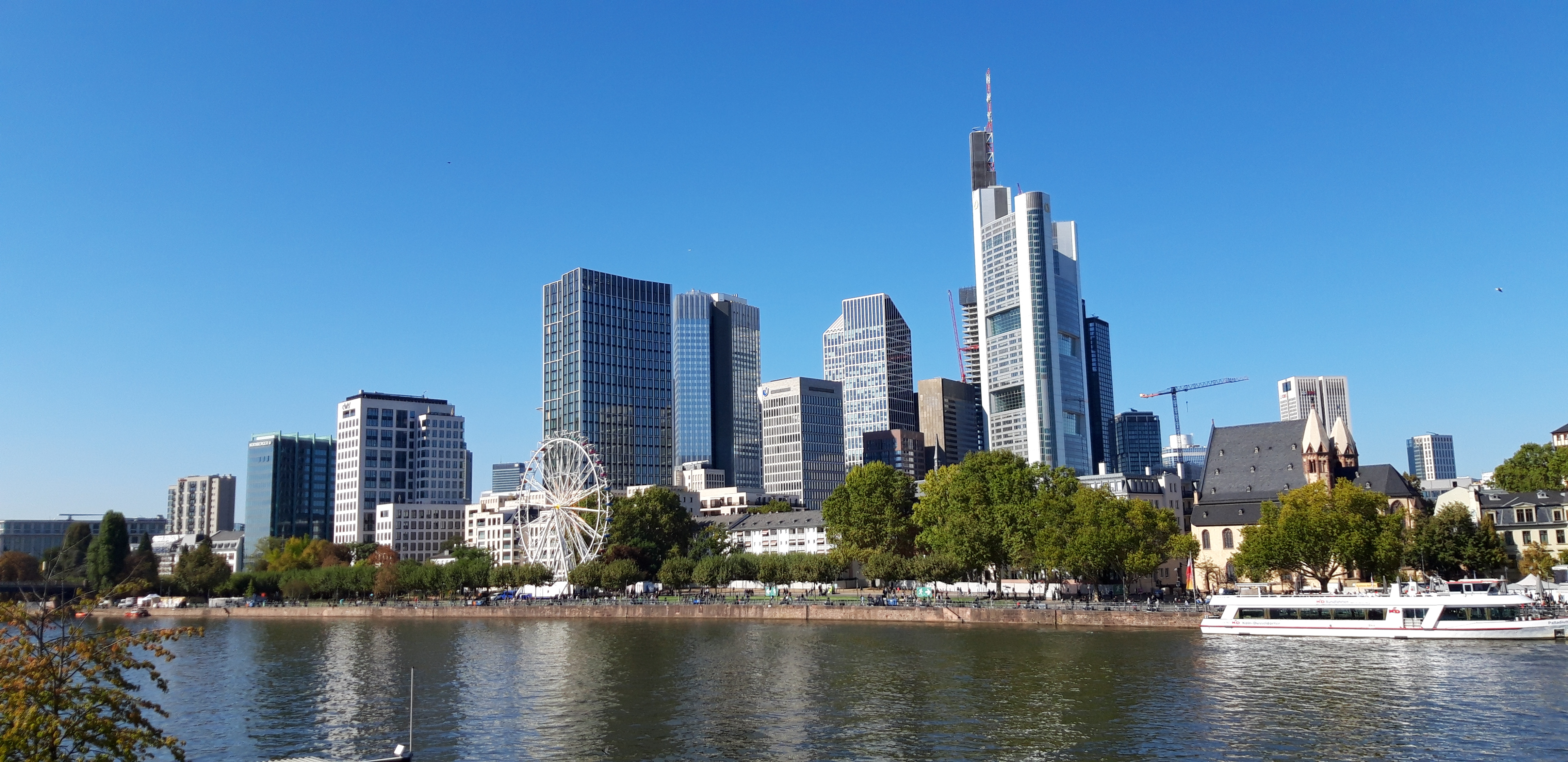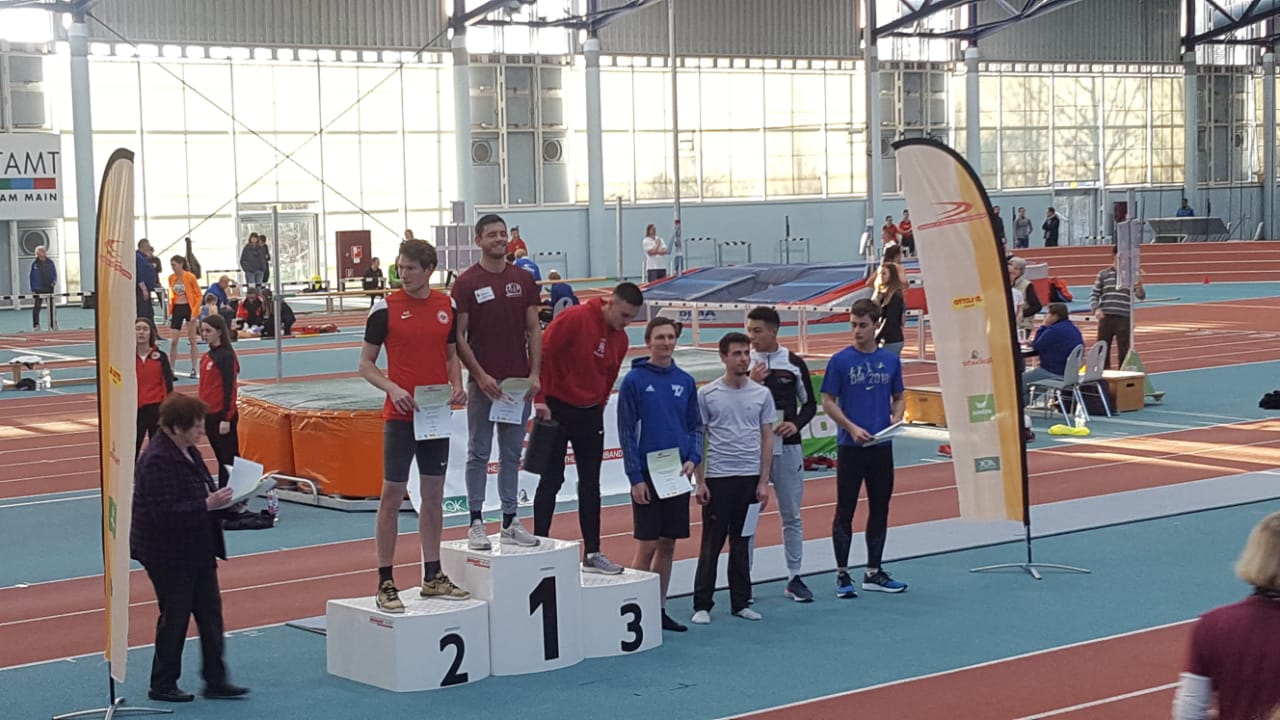Read this blog in:
Bacterial Binding in Frankfurt am Main
Me, myself and I
Hi everyone! My name is Arno Thibau and I am from Belgium. Together with the other 14 early stage researchers (ESRs) I got the great opportunity to pursue a PhD via the European MSCA-ITN project: ViBrANT. If you want to discover more about this exciting project, I suggest browsing the website you are visiting right now! My colleague Diana Vaca (ESR 7) and I are both working in Frankfurt am Main, Germany. We are conducting our research in the Institute of Medical Microbiology at the Goethe University Hospital Frankfurt.

The Goethe University Clinic Frankfurt back in summer times

Christmas party with colleagues
How did I end up here in Frankfurt? For a long time, I have been interested in various scientific topics such as astronomy, archaeology and of course natural sciences. Later on, in high school, I discovered the basics of general science via the courses: chemistry, physics and biology. Subsequently, I pursued a Bachelor of Bioscience Engineering Technology, which was followed by a more applied Master of Biochemical Engineering Technology. My interest for a PhD came up during my Master’s thesis where encountered the more fundamental research. Consequently I searched for several PhD-positions, but in the end the ViBrANT-project really sparked my interest. I applied… and now I am here!
In my view, all that is necessary for faith is the belief that by doing our best we shall come nearer to success and that success in our aims (the improvement of the lot of mankind, present and future) is worth attaining.
– Rosalind Franklin, 1940
The research project
My personal research focuses on the first attachment of the pathogenic bacterium Bartonella henselae to human endothelial cells (i.e. interior surface cells of blood vessels) or human extracellular proteins. Infections with this bacterium are worldwide the third most common reason for fever of unknown origin and are responsible for some tumor-like vascular diseases (e.g. cat scratch disease and bacillary angiomatosis). B. henselae is characterized by a large protein: the trimeric autotransporter adhesin (TAA). This protein is named BadA and could be crucial for the first connection during infection. Fibronectin, a glycoprotein, may mediate this first connection via bridge-formation. Therefore, it is my task to research whether and how this BadA-protein binds to our cells so that a first step can be made towards the development of anti-ligands as a new class of antibiotics.
Life in Frankfurt am Main
I ended up in a wonderful working environment with friendly, helpful and cheerful colleagues who made me feel at home pretty quick. Furthermore, in order to blend in more easily in the daily German life, I am currently taking German language courses. Unlike the laboratory environment, where I can make myself clear in English, I have to speak German during my athletics trainings. Indeed, my (almost) daily distraction and recreation from my PhD is athletics, long jump. However, my bike trips alongside the river Main between home and work also contribute significantly in clearing my mind at the end of a hectic day.
In conclusion, I am eagerly looking forward to see what the rest of this exciting adventure might bring…

Daily biking views between home and work

First competition as a member of Athletics Club Eintracht Frankfurt



